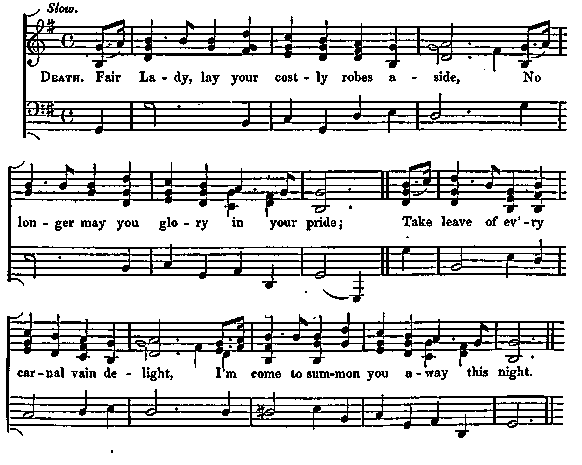Popular Music Of The Olden Time Vol 1
Ancient Songs, Ballads, & Dance Tunes, Sheet Music & Lyrics - online book
| Share page | Visit Us On FB |
|
REIGN OF ELIZABETH. |
167 |
||
|
Henry Carey's Musical Century, 1738. He calls it " the old tune of Death and the Lady." Also in The Gobbler's Opera, 1729; The Fashionable Lady; and many others about the same date.
The oldest copies of Aim not too high direct it to be sung to the tune of Fortune, but there is one class of ballads, said to be to the tune of Aim not too high, that could not well be sung to that air. The accent of Fortune my foe is on the first syllable of each line; exactly agreeing with the tune. But these ballads on Death have the accent on the second, and agree with the tune of Death and the Lady. See, for instance, the four lines above quoted from The Dialogue between Death and the rich man, which the black-letter copies direct to be sung to the tunc of Aim not too high. I believe, therefore, that Aim not too high had either a separate tune, which is the same I find under the name of Death and the Lady, or else, Fortune, being altered by the singer for the accent of those ballads, and sung in a major key, gradually acquired a different shape. (Many of these airs are found both in major and minor keys.) This would account for Fortune and Aim not too high being so frequently cited as different tunes in ballads printed about the same period.
I suppose, then, that ballads to the tune of Aim not too high may be either to Fortune, or Death and the Lady; a point to be determined generally by the accent of the words.
The ballad of Death and the Lady is printed in a small volume entitled A Chiide to Heaven, 12mo., 1736; and it is twice mentioned in Goldsmith's popular tale, The Vicar of Wakefield, first printed in 1776. |
|||
|
|
|||
 |
|||